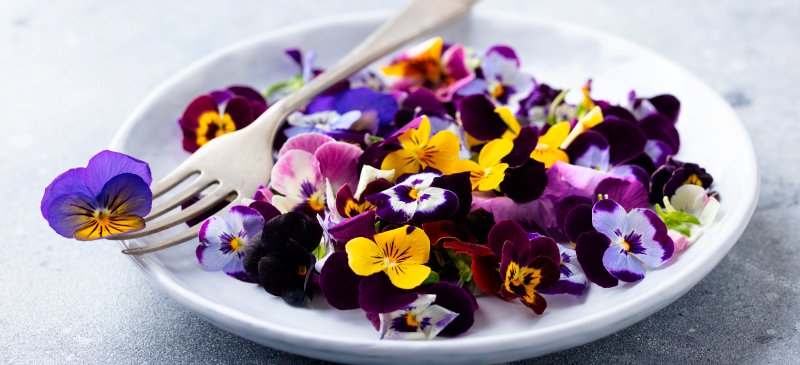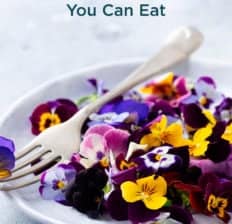This Dr. Axe content is medically reviewed or fact checked to ensure factually accurate information.
With strict editorial sourcing guidelines, we only link to academic research institutions, reputable media sites and, when research is available, medically peer-reviewed studies. Note that the numbers in parentheses (1, 2, etc.) are clickable links to these studies.
The information in our articles is NOT intended to replace a one-on-one relationship with a qualified health care professional and is not intended as medical advice.
This article is based on scientific evidence, written by experts and fact checked by our trained editorial staff. Note that the numbers in parentheses (1, 2, etc.) are clickable links to medically peer-reviewed studies.
Our team includes licensed nutritionists and dietitians, certified health education specialists, as well as certified strength and conditioning specialists, personal trainers and corrective exercise specialists. Our team aims to be not only thorough with its research, but also objective and unbiased.
The information in our articles is NOT intended to replace a one-on-one relationship with a qualified health care professional and is not intended as medical advice.
Top 12 Edible Flowers and Their Various Health Benefits
April 5, 2024

Edible flowers are often used as a colorful garnish for your plate, but these beauties have been used in traditional medicine for their nutritional value as well. In fact, edible flowers like lavender, dandelion and hibiscus have been consumed for thousands of years and serve as natural remedies for a range of health concerns.
When it comes to edible food parts, florets are commonly jam-packed with health-promoting, anti-aging antioxidants that support overall health.
Top 12 Edible Flowers
Who knew that so many of the flowers growing in your gardens and meadows are actually edible and provide health benefits. Here’s a guide to the top edible flowers and their beneficial properties:
1. Lavender
Lavender flowers have a flavor with pleasant citrus notes. They can be added to baked goods, teas, sorbets and more.
The benefits of lavender oil are well-known and include its ability to ease anxiety and promote better sleep aromatically.
Although the benefits of consuming its flowers are minimal, research suggests that lavender tea may help reduce depression and anxiety. Lavender flowers are also used to aid digestive complaints, like gas and nausea.
2. Calendula
Calendula is an edible flower that’s been used for ornamental and culinary purposes for centuries. It’s an antiviral herb that possesses anti-inflammatory capabilities with its powerful flavonoids.
Research indicates that the antioxidants in calendula protect the body from free radical damage and pro-inflammatory compounds like cytokines. The edible flower also contains linoleic acid, which serves as a powerful anti-inflammatory agent.
3. Hibiscus
Hibiscus is a flower with a deep red color that’s often used to make tea. Traditional hibiscus tea is made from the flower’s dried parts, including the calyx, which is the flower’s protective layer.
A 2018 review on the plant’s therapeutic uses shows that hibiscus is utilized to support healthy blood pressure and cholesterol levels. It also serves as an antioxidant because of the anthocyanins and polysaccharides present in the flower.
4. Fennel
The entire fennel plant is edible, including its feathery leaves and florets. It’s a celery-like winter vegetable that has a distinguishable licorice-like taste.
Like many edible plants, it’s rich in antioxidants that help reduce free radical damage and early aging.
A study published in the Journal of the Science of Food and Agriculture found that the plant’s total phenolic amount increased from leaves to florets, reaching its highest value as early florets.
Perhaps fennel’s most well-known benefit is its ability to aid digestion. Chewing on the seeds of the plant can help stimulate digestive juices, and the stalk is high in fiber.
5. Dandelion
Dandelions are often viewed as weeds, but they feature an impressive nutrition profile. The plant is from the daisy family, and it has a yellow-orange floret.
Mature dandelion flowers become white balls that contain seeds and fine hairs. Both the flowers and dandelion greens are edible and contain high levels of vitamin A, which has been proven to promote eye health, immune support and skin health.
Dandelion greens and flowers are often used to make tea or added to sauces, dips, salads, pasta dishes and more.
6. Chamomile
Chamomile has been used as a medicinal herb to promote longevity. The flowers are often used to make tea, which have been found to help reduce inflammation, promote relaxation and better sleep, ease menstrual pain, and relieve congestion.
Chamomile flowers are packed with protective antioxidants and available in potent forms, like dry powders and extracts. Perhaps the easiest way to experience chamomile benefits is to sip tea and enjoy the calming effects.
7. Chrysanthemum
Chrysanthemum, also known as mum, is a perennial herb that’s used in folk medicine to treat headaches, insomnia and bone disorders. These flowers have a high content of anthocyanins, which are powerful antioxidants that have been found to promote anti-inflammatory mechanisms.
In Chinese medicine, chrysanthemum is known for its sedative properties and helps facilitate relaxation. The edible flower is also used to promote detoxification and boost energy levels, and it’s often consumed as chrysanthemum tea.
8. Nasturtium
Nasturtium is a plant that has been used for centuries in traditional medicine practices in places like South Africa. The plant’s flowers come in a wide variety of colors, including reds, oranges and yellows.
Every part of the plant is edible, and it contains vitamin C, vitamin A and antioxidants like lutein.
The flowers are consumed to boost eye and skin health by fighting free radical damage. Nasturtium extracts are valued for their antibacterial effects and possess natural antibiotic properties.
Nasturtium flowers can also be used to make pesto or added to salads, providing a mild, peppery flavor.
9. Sage Flower
Sage is a perennial shrub that makes edible purplish-blue or white flowers. The flowers commonly used to make tea or as a garnish.
In folk medicine, sage is used for gout, inflammation, diarrhea and ulcers. Research indicates that it may help relieve heartburn and even boost cognitive health.
10. Marigold
Marigolds are brightly orange-colored edible flowers that are used to make herbal teas, ointments and tinctures. The flowers have soothing properties when applied topically and are often used to relieve sunburn, bites, warts and dry skin.
Marigold tea has anti-inflammatory effects and is rich in antioxidants. Studies highlight that its components also have antiseptic properties and are sometimes applied to infected areas to act as a natural antibiotic.
11. Violets
Violets are known as wildflowers, and they grow throughout the United States. These blue beauties are actually edible and contain high amounts of vitamins C and A.
The edible flowers are often used to make teas and syrups, added to baked goods, and used as a garnish in soups and salads.
Research suggests that the cyclotides in violets have antifungal properties and serve as a natural defense system for the plants and people who consume them.
One word of caution, however. You don’t want to eat yellow violets, as they can cause GI issues.
12. Marjoram
Marjoram is a perennial herb that’s been used to make teas for centuries. It has a similar flavor to oregano but is more mild and sweeter.
The flowers and leaves of the plant are edible and can help aid digestion by stimulating the salivary glands.
Drinking marjoram tea is a common natural remedy for easing constipation, diarrhea, cramps and gassiness. Research suggests that its antioxidants and chemical constituents possess anti-inflammatory and gastroprotective effects.
Other edible flowers include:
- squash blossoms
- rose
- pansy
- thyme
- mint
- arugula
- lovage
- borage
- cilantro
- anise hyssop
- butterfly pea flower
How to Use Edible Flowers
The most common way to consume edible flowers is by making tea. Generally, flowers can be steeped in hot water for one hour, or sun tea can be left in a sunny area for about one day. Adding lemon or honey to herbal teas is a great way to add sweetness naturally.
Flowers can also be used as garnishes, added to dips and sauces, or used in baked goods recipes.
You can purchase some edible flowers at health food stores or farmers markets. You can also pick your own edible flowers, but make sure they are indeed safe to consume.
If you’re foraging your own edible flowers or leaves, be sure not to pick from areas that have been sprayed with pesticides or any other types of chemicals.
To clean edible flowers, add them to a bowl of cold water, and then place them on a paper towel to air dry. If you don’t eat them immediately, store them in a damp paper towel within an airtight container. They can be kept in the refrigerator for about a week.
Risks and Side Effects
If you’re eating foraged flowers, be absolutely sure they are edible beforehand. Flowers aren’t safe to eat unless they are grown organically, without the use of pesticides, herbicides or any other chemical spray.
If you are consuming a flower for the first time, start with small amounts to allow for your digestive system to adjust, and be sure you don’t have an adverse reaction. If you are allergic to pollen, be sure that the flower is washed thoroughly.
Don’t eat flowers from plants you buy in a nursery or florist unless they specifically indicate that they don’t use chemical sprays.
Conclusion
- Some of the plants and “weeds” that you have growing in your very own garden are actually safe to consume.
- Edible flowers are an excellent source of nutrients, commonly packed with antioxidants and anti-inflammatory compounds.
- Making teas with florets or adding them to recipes are an excellent ways to take advantage of their health benefits, which include aiding digestion, reducing signs of aging, fighting infections and easing pain.


